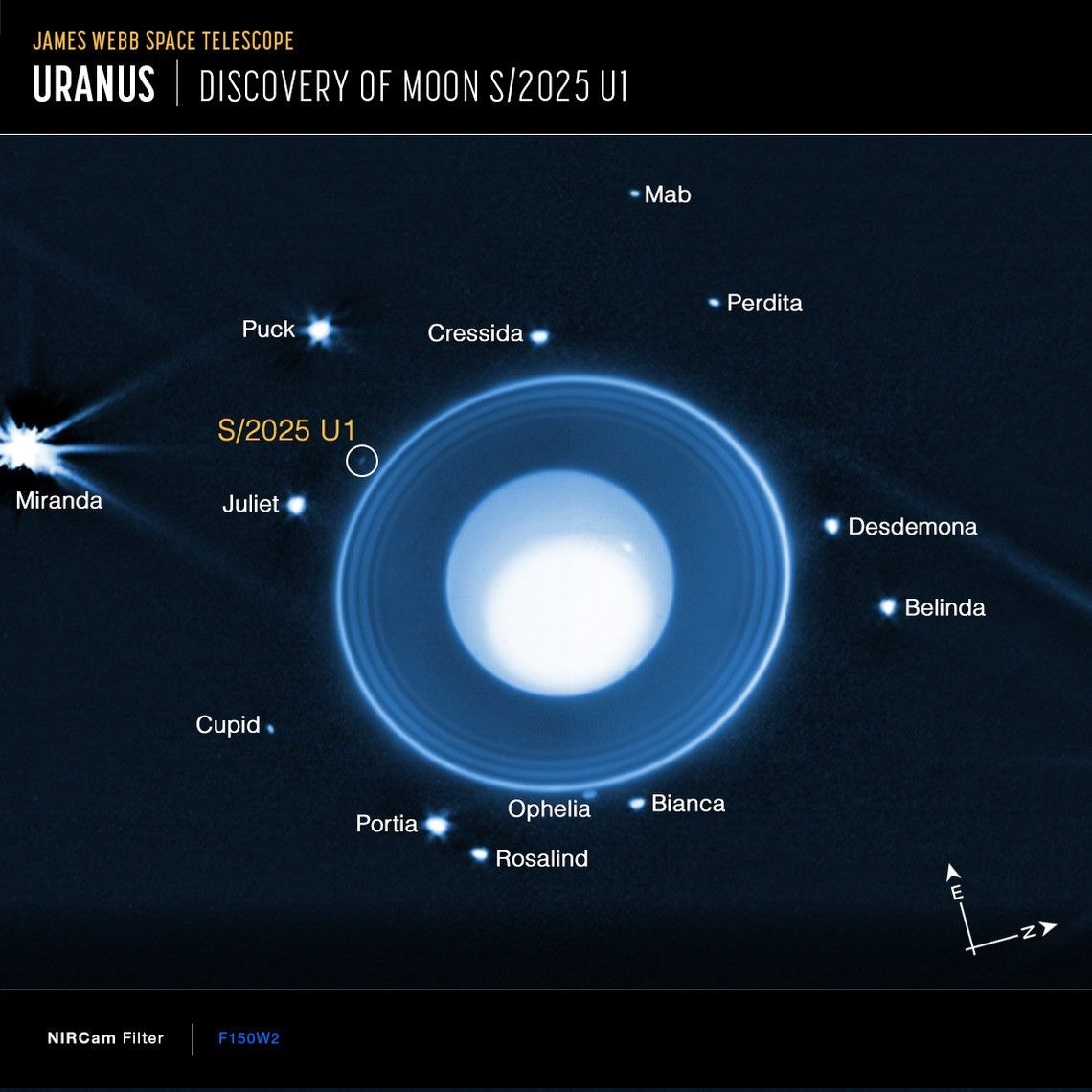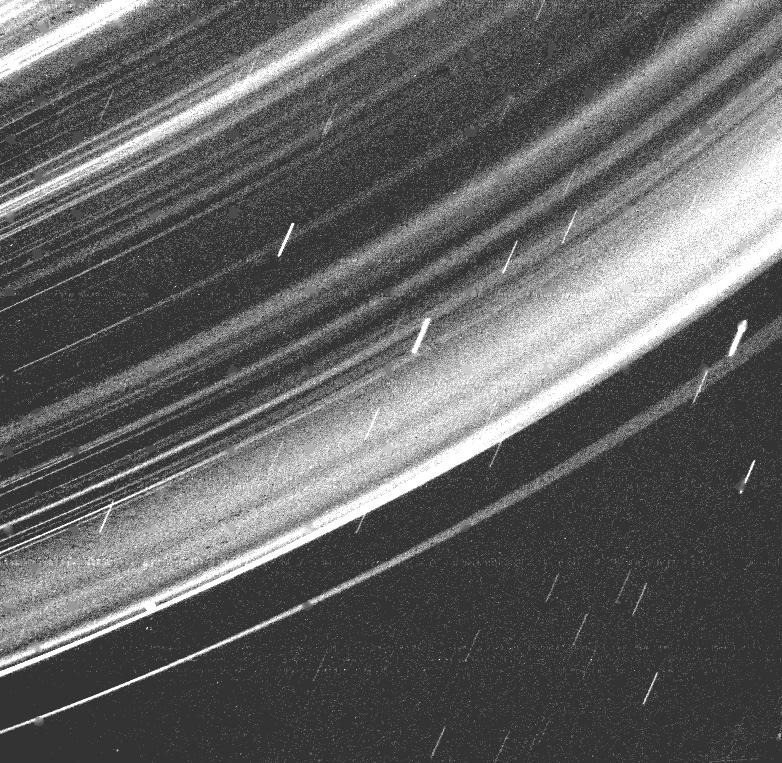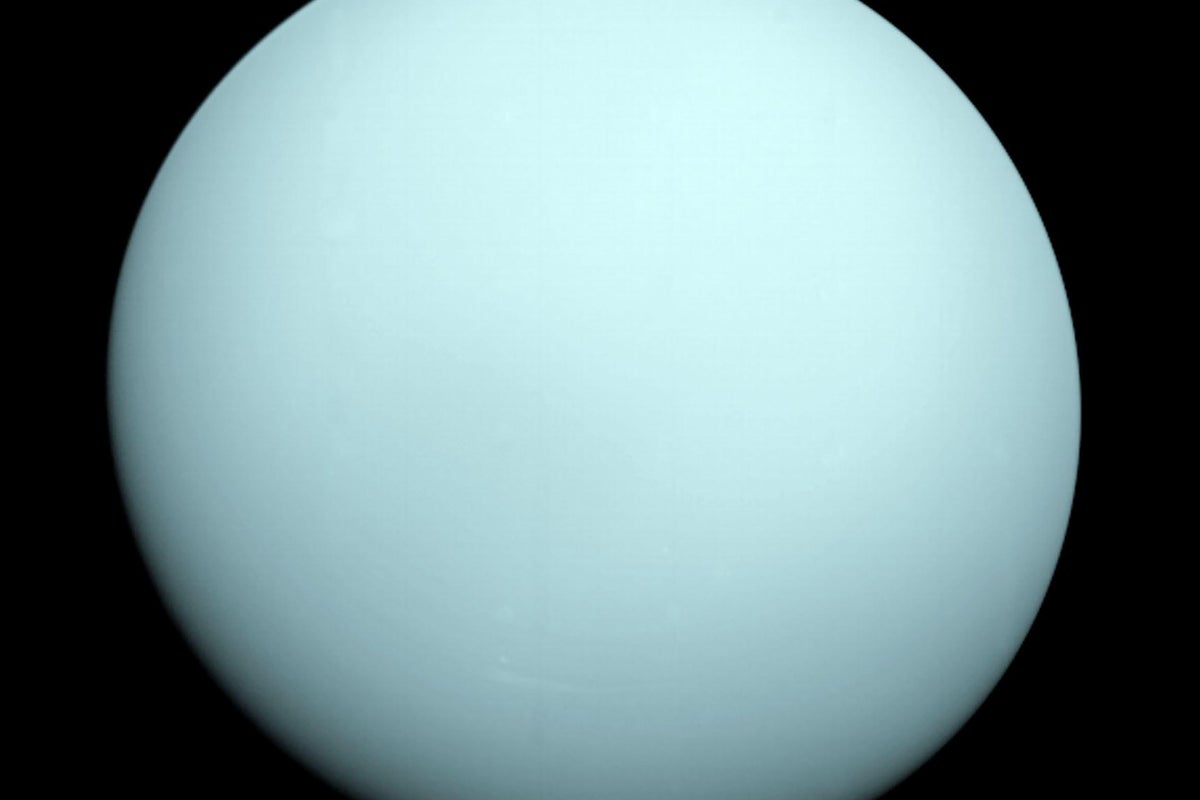Astronomers using NASA’s James Webb Space Telescope have discovered a newfound moon orbiting icy Uranus, the seventh planet from the sun.
The moon, known as S/2025 U1, is just 6 miles (10 kilometers) or so in diameter, which made it invisible to NASA’s Voyager 2 probe during its 1986 flyby of the planet, as well as rendering it undetectable by other telescopes. But then came the powerful James Webb Space Telescope (JWST).
A team led by scientists at the Southwest Research Institute (SwRI) in Colorado made 10 different 40-minute exposures of Uranus using JWST’s Near-Infrared Camera (NIRCam) in order to find the small moon. Its discovery brings the total number of known Uranian moons to 29.

S/2025 U1 is located around 35,000 miles (56,000 km) from Uranus’ center. By comparison, Earth’s moon orbits at an average of 238,855 miles (384,400 km) from our planet. S/2025 U1 orbits Uranus on a circular path, implying that it likely formed in its current position.
The moon orbits alongside a number of small satellites that lie inside the orbit of Uranus’ largest moons — Miranda, Ariel, Umbriel, Oberon and Titania (27 of Uranus’ 29 moons are named after characters found in Shakespeare plays). S/2025 UI will get an official name from the International Astronomical Union (IAU) sometime in the future.
Aside from demonstrating the revolutionary capabilities of the James Webb Space Telescope, scientists say the discovery of S/2025 U1 shows that there is still much to learn about Uranus and its complex system of moons and rings.
“No other planet has as many small inner moons as Uranus, and their complex inter-relationships with the rings hint at a chaotic history that blurs the boundary between a ring system and a system of moons,” said Matthew Tiscareno of the SETI Institute in Mountain View, California, a member of the team behind this discovery, in a statement. “Moreover, the new moon is smaller and much fainter than the smallest of the previously known inner moons, making it likely that even more complexity remains to be discovered.”

Uranus has 13 rings, which are divided into an inner system and a pair of outer rings. Unlike the ring systems of Jupiter and Saturn, Uranus’ rings are made up of dark material and are more difficult to observe. The planet’s 14 inner moons orbit among the faint inner rings, and some of these moons help hold some of the planet’s rings in shape.
NASA’s iconic interstellar Voyager 2 probe traveled past Uranus in January 1986, becoming the first spacecraft to do so — and today, it remains the only one ever to have visited the distant ice giant. At the time, astronomers only knew about five moons orbiting Uranus, according to NASA.

Scientists say the capabilities of the James Webb Space Telescope will allow us to learn even more about our distant neighbors at the outer reaches of the solar system.
“Looking forward, the discovery of this moon underscores how modern astronomy continues to build upon the legacy of missions like Voyager 2, which flew past Uranus on Jan. 24, 1986, and gave humanity its first close-up look at this mysterious world,” said Maryame El Moutamid, a lead scientist at SwRI. “Now, nearly four decades later, the James Webb Space Telescope is pushing that frontier even farther.”
Source link

